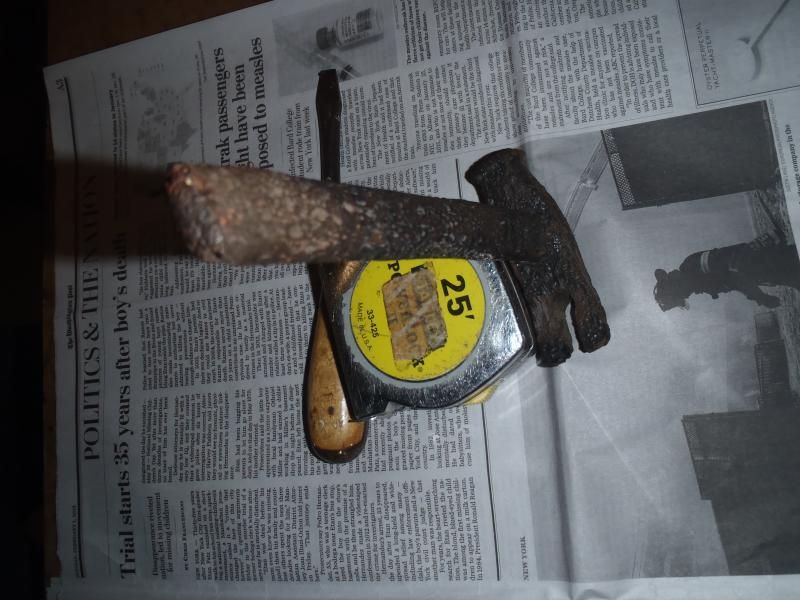Installing the handle was just crazy challenging. The Link Boys axe handle I selected from my hardware purveyor “seemed” to almost fit the eye, at least closer than anything else in the well-stocked farm-country hardware store. They actually had several Boys axe handles to choose from. Gawd love a real country hardware store.
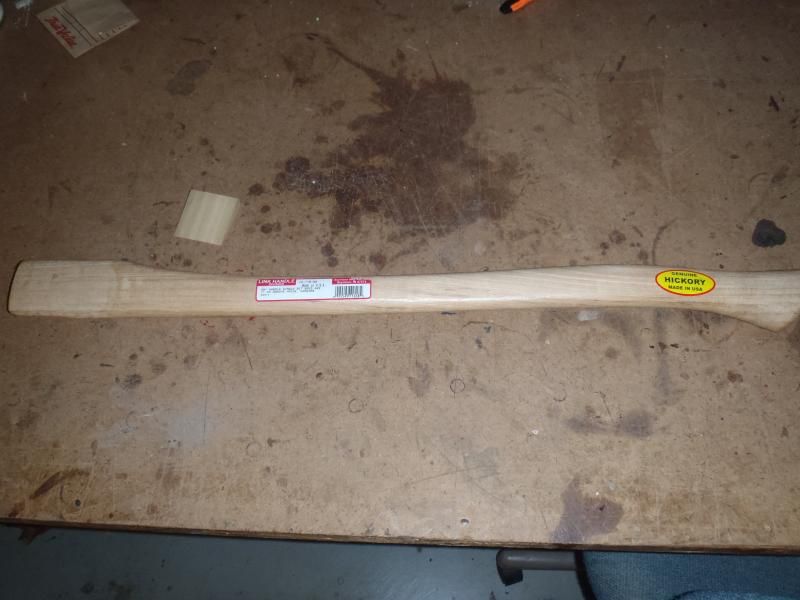
Well, close, but no oddly tapered cigar. This was kind of a square peg in a round hole challenge. Since the eye is smaller on the bottom I am at a loss as to how to file down the handle so that it will pass through the bottom of the eye and still, somehow, magically fill the eye at the top, even with a wedge.
Once again, a lot of repetitive filing, test seating, removal, more filing, more test seating and repeat and repeat, until I had an even all-around that fit snuggly at the bottom and still filled as much of the eye as possible at the top. The delicacy of that custom fitting process does give me a clue as to how the previous owner installed the head on the handle upside down. That sure would have been easier.
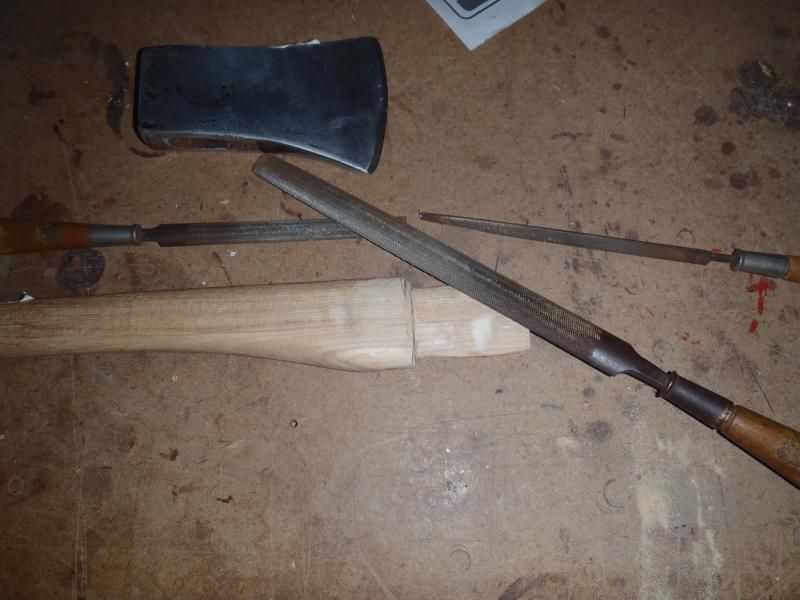
I was unsure about reducing the dimensions of the handle at the base of the eye, and the more I filed the end to fit snugly through the base of that tapered eye, the thinner the throat of the handle was going to need to be.
I left it at an abrupt L transition, at least for now. If that is a bad thing I can always go back and taper the throat of the handle with a rasp.
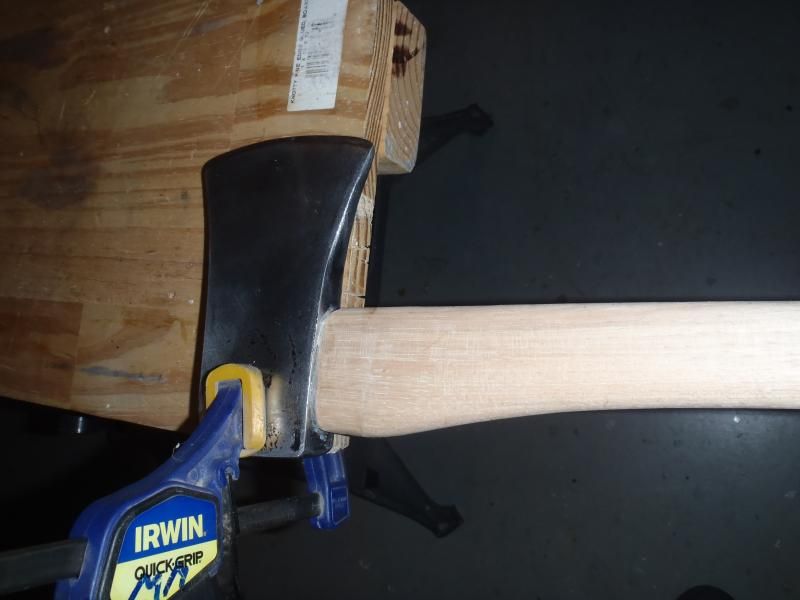
Eventually, with the handle seated and reseated several dozen times in the eye, I had a tight snug fit at the bottom and the top of the handle just above the eye. I trimmed out the slot and tapered the wood wedge slightly \_/ to fit within the eye. With the wedge seated it spreads the handle to fill the eye side to side, and the wedge length fills the eye opening fore and aft on top
It is a curious little axe head; I hadn’t measured the actual length of the eye, just the width; It is slightly longer at the top, just like it is slightly wider. The wood wedge fills that, but I am left with small L gaps on each “corner”.
Functionally those little corner voids probably make no difference, but those voids are not aesthetically pleasing. I had a project that needed G/flex attention, so I dribbled a dab of excess into those gaps. That will probably make it a PITA to ever replace the handle, so I hope I never break this one.
A buffing with 0000 steel wool took off the wax and a light sanding with 220 smoothed out any dings or dents from handle work.
Adopting Bernie’s personal preference from the Axe to Grind Forest Service video after sanding it all with 220 I lightly roughed up the bottom 6 inches of the handle with a rasp for better purchase. That seems like a reasonable safety step, and it would be embarrassing to lose my grip at the next lumbersexual party.
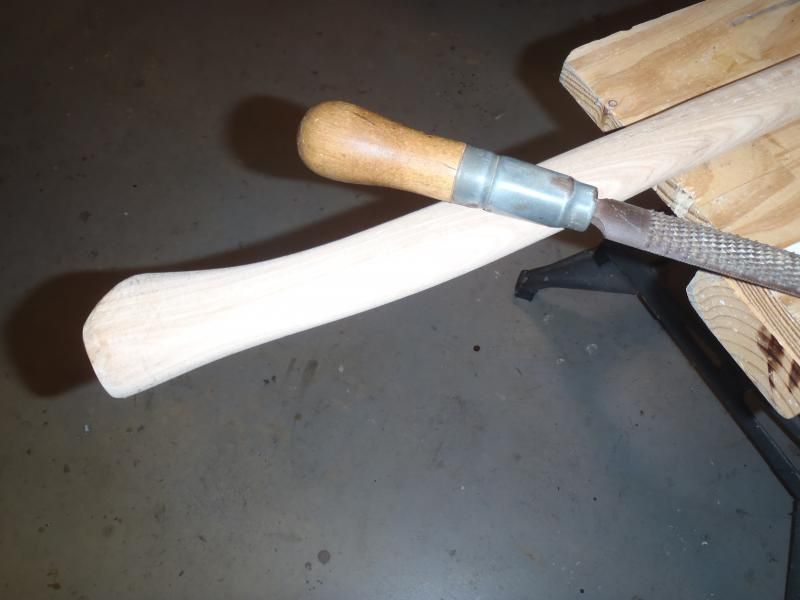
Tack clothed and ready for the first oil treatment. I used the same DIY mix I use on gunwales and paddle grips, 1/3 boiled linseed oil, 1/3 turpentine and 1/3 old varnish. I wanted that mix a little turpentine heavy, so I decanted some of the oil mix into a cup and add a dollop of turp.
The little DIY cup-on-a-stick is one of those shop helpers; I can dip out an appropriate quantity of oil (or whatever) into a cup and not have to slobber stuff into the lid seal and down the outside of the can while trying to pour just a wee dribble (which never works well with a full can).
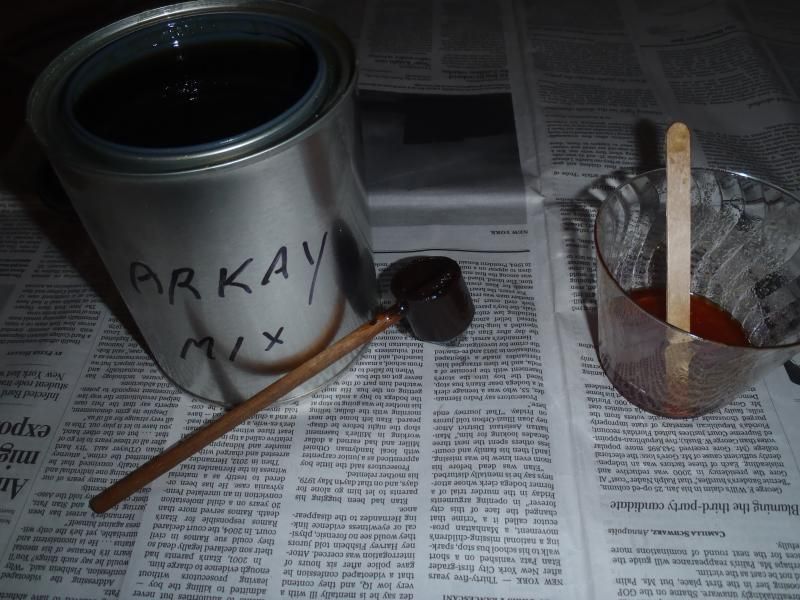
That first turpentine coat sucked into the wood quickly, which I will take as a sign that the handle was sufficiently dry. I did have it resting a couple of feet from the wood stove for a few nights. It sucked in fast enough that I was able to apply a second coat a few hours later, likewise thinned with a bit of extra turpentine.
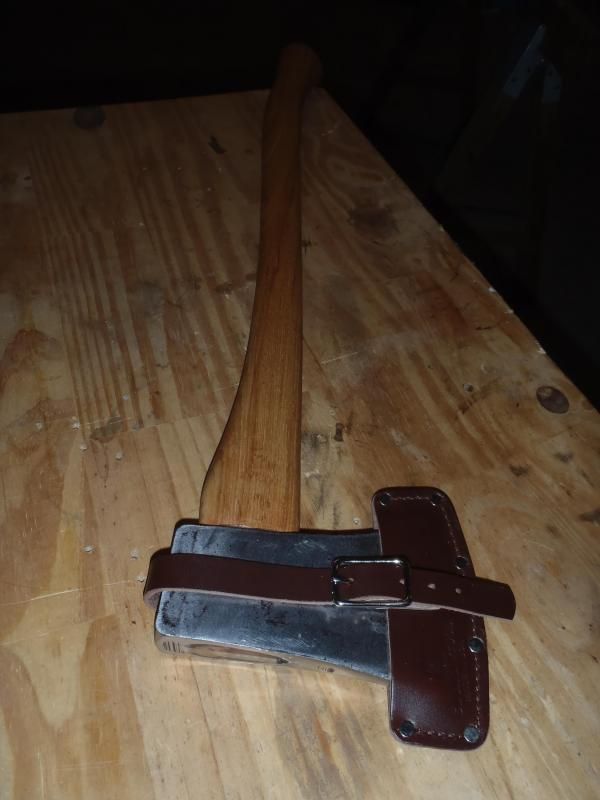
BTW, I have now watched the Forest Service video several times, and will watch the sharpening part again before putting a proper edge on this axe.
https://www.youtube.com/watch?v=Xz3rs-eaN3E
I love the way Bernie casually flips the linseed oil rag over his shoulder onto the shop floor. Since he is responsible for upkeep on the historic buildings that oily rag treatment should guarantee him life-time employment. (My used oil rags are all safely outside the shop)
Having spent some quality time with this Boys axe I have become even more intrigued. There is (or was) definitely something stamped on one side of the pole, and maybe both. There appears to be a faint letter T in the middle, and maybe an O after that.
I don’t want to sand that area away any further, so I may have to find one of those grit impregnated rubber bars (Wonder Bar) to relieve the gunk on the sides of the pole and in hopes of revealing any discernable lettering. I’d really like to be able to decipher what was once stamped there.
I have a few days of handle oiling in my future, at least until the wood stops sucking in oil. When enough is enough is somehow apparent when wiping on (and off) an oil mixture. The wood just sort of tells you, yup, that’s all I’m going to take.
Once oiled to my satisfaction I need to put a good edge on it. Even with some protection wrapped around the edge while working on the axe I want to save sharpening for last.
I’m fast running out of antique tool projects. I need to find a derelict canoe to work on before I start in on my hammer.
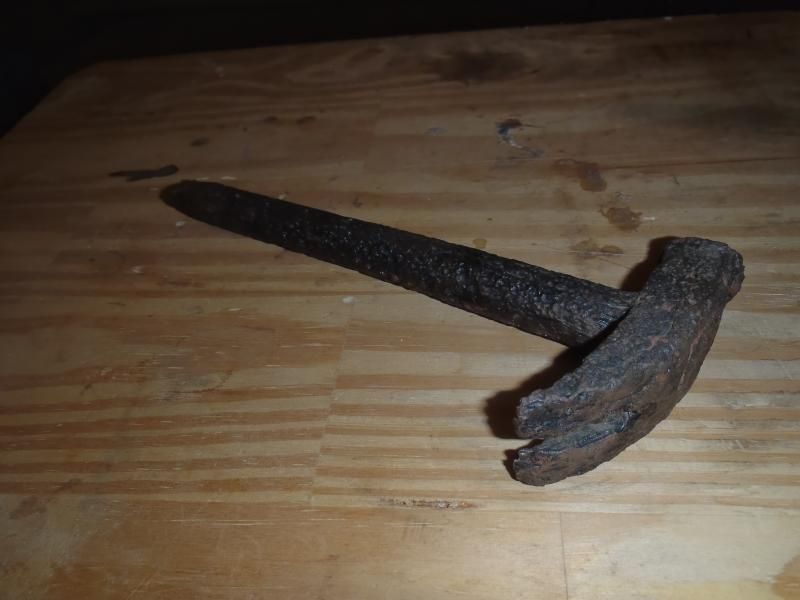
 I generally use .080" & .093" for knife sheaths and other small tools. For full sized axes I use the .125". On all my Kydex covers I stay with .25" eyelets to allow easy accessory attachment, e.g., fire steels and such. When attaching accessories be sure to purchase high quality Chicago screws - the more inexpensive aluminum versions are much less desirable. All the supplies can be found at most knife kit distributors such as http://www.knifekits.com/vcom/index.php
I generally use .080" & .093" for knife sheaths and other small tools. For full sized axes I use the .125". On all my Kydex covers I stay with .25" eyelets to allow easy accessory attachment, e.g., fire steels and such. When attaching accessories be sure to purchase high quality Chicago screws - the more inexpensive aluminum versions are much less desirable. All the supplies can be found at most knife kit distributors such as http://www.knifekits.com/vcom/index.php









